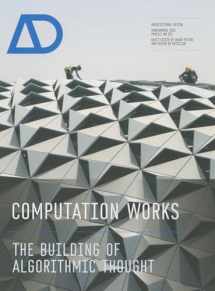
Computation Works: The Building of Algorithmic Thought
Book details
Summary
Description
Architects are now taking advantage of the computer in new ways through experimentation with algorithmic and simulation-driven design. Computation Works: The Building of Algorithmic Thought focuses on this emerging theme in design practice, showcasing built and soon-to-be-built projects and providing a state of the art in computational design. Computational design is considered to be first a design tool, and second a series of instruments that can be applied in the creation of architecture. It allows architects to incorporate performance analysis and knowledge about material, tectonics and the parameters of production machinery. Moving towards a new role as hybrid practitioners, architects are taking concepts from other disciplines and customising architectural and other CAD software. In addition to the discussion of built projects, a further series of texts examines new custom software instruments. New digital tools provide new modes of representation, new methods of evaluation, and new techniques for design exploration. The development of new computational tools can create more responsive designs, allowing architects to explore new design options and to analyse architectural decisions during the design process. This issue raises important questions such as: How is computation changing the way architects design? Are the design tools and methods related to the result? What is computational design in the context of architectural practice? and How is computation changing the processes of design and construction?


We would LOVE it if you could help us and other readers by reviewing the book
Book review



